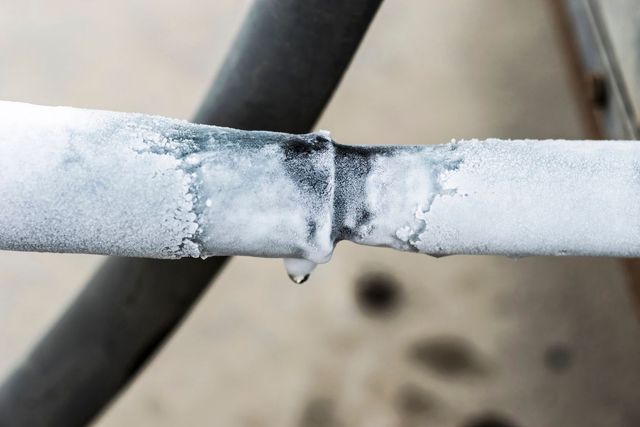Managing a Frozen AC Pipe: Comprehensive Handbook
Managing a Frozen AC Pipe: Comprehensive Handbook
Blog Article
They are making several great points about Have a Frozen AC Line? Here’s How to Fix It in general in the content down the page.

Intro
Uncovering that your air conditioner pipeline is iced up can be concerning, specifically throughout warm summer months when you rely upon your ac unit one of the most. Understanding what to do in such a situation is crucial to avoid additional damage to your air conditioning system and ensure your convenience indoors.
Recognizing the Causes
A number of elements can contribute to the cold of an AC pipe. Understanding these reasons can aid you attend to the problem properly.
Lack of Airflow
One common reason for a frozen air conditioning pipe is inadequate airflow. When the airflow over the evaporator coil is limited, it can create the coil to go down below freezing temperature, leading to ice formation on the pipeline.
Reduced Refrigerant Levels
Not enough cooling agent degrees in your air conditioning system can additionally lead to a frozen pipe. Low refrigerant degrees can create the stress in the system to go down, bring about the cold of wetness on the evaporator coil.
Cold Weather Conditions
In colder climates, freezing temperatures outside can add to the cold of AC pipes. If your air conditioner unit is not effectively insulated or if there are leakages in the ductwork, chilly air can penetrate the system, triggering the pipe to ice up.
Dirty Air Filters
Filthy or clogged up air filters can limit airflow in your air conditioning system, resulting in different issues, including a frozen pipeline. It's essential to change or clean your air filters regularly to guarantee appropriate airflow and stop ice build-up.
Indicators of a Frozen Air Conditioning Pipe
Identifying the indications of an icy a/c pipe is essential for punctual activity.
Decreased Airflow
If you discover a significant decrease in air movement from your vents, it might show an icy pipe.
Ice Buildup on the Pipe
Noticeable ice accumulation on the refrigerant line or the evaporator coil is a clear sign of a frozen air conditioning pipe.
Strange Sounds from the Unit
Uncommon audios, such as hissing or bubbling, coming from your AC device can indicate that there's ice present on the pipe.
Immediate Actions to Take
When confronted with a frozen a/c pipeline, it's important to act promptly to prevent further damage to your air conditioning system.
Switching off the AC
The initial step is to shut off your air conditioning unit to avoid the system from running and aggravating the problem.
Looking for Blockages
Check the area around the indoor unit for any blockages that might be obstructing airflow, such as furnishings or curtains.
Thawing the Pipe
You can use gentle methods like placing towels taken in warm water around the frozen pipe to aid thaw it gradually.
Preventive Measures
Taking safety nets can aid prevent future events of an icy air conditioning pipeline.
Routine Maintenance Checks
Set up regular maintenance talk to a specialist HVAC technician to make certain that your a/c system is running successfully.
Altering Air Filters
Regularly change or clean your air filters to avoid airflow limitations and preserve optimal performance.
Shielding Exposed Pipes
If your AC pipes are revealed to cold temperatures, think about insulating them to prevent freezing during cold weather.
Looking For Professional Help
If DIY techniques stop working to fix the problem or if you're not sure concerning just how to continue, it's best to look for support from a qualified HVAC specialist.
When DIY Methods Fail
If your attempts to thaw the pipeline or address various other problems are not successful, it's time to call in a professional.
Value of Hiring a Professional HVAC Technician
A licensed HVAC service technician has the know-how and devices necessary to diagnose and fix problems with your AC system securely and properly.
Final thought
Managing a frozen AC pipe can be an aggravating experience, yet knowing exactly how to react can assist reduce damages and restore convenience to your home. By understanding the reasons, identifying the indications, and taking prompt action, you can successfully resolve the problem and protect against future incidents.
What to Do If Your AC Line Is Frozen
Make Sure All Supply and Return Air Vents Are Open
If you notice problems with airflow, the first thing you should do is check your supply and return vents. Supply vents distribute clean, conditioned air throughout your home. As this air becomes stale, it’s pulled into the return vent, where it’s reconditioned before being sent back out through the supply vent.
When these vents are closed, air won’t flow in the home. Before examining your AC, check the vents in every room and ensure they’re all open.
Check for a Dirty Air Filter
Another possible cause of limited airflow is a dirty air filter. Your air conditioner’s filters catch elements you don’t want to breathe in, such as dirt and dust. Over time, filters can become clogged, ultimately blocking air from flowing in and out. The lack of airflow can then cause the entire coil to freeze and will completely restrict any air from moving through it. The AC may need to be powered off for one to two days to allow the coil to thaw after replacing the filter to allow proper functioning of the unit. This debris can also accumulate on your AC’s evaporator coil, requiring a more serious repair. In general, air filters should be cleaned regularly (about every two weeks).
Assess Your Outdoor Unit
In addition to checking your AC, assessing the outdoor unit is a good idea. Also known as the condensing unit, it works with your interior unit to release heat outside. An issue with the outdoor unit can result in rising internal temperatures.
Overgrown Shrubs or Clogged Leaves
From leaves and twigs to shrubs and debris, there’s no shortage of outdoor elements that can accumulate around your condensing unit. When these elements get lodged inside the unit, they can block airflow. Fortunately, removing the blockage can solve the problem.
Sounds of a Broken Fan
Shrubs and leaves aren’t the only things that can impede your outdoor unit’s airflow. If the fan is broken, the unit won’t be able to properly get rid of heat — which means the internal temperature won’t go down. First, make sure the fan is spinning. If it is, check for the following sounds of a broken fan:
Buzzing Rattling Screeching Hissing Clicking Preventative Measures
Nobody wants to deal with a frozen AC line. In addition to causing problems with your air conditioner, they require professional repairs. On the bright side, there are preventative measures you can take to help ensure this issue doesn’t arise in the first place.
https://www.coopergreenteam.com/blog/what-to-do-if-ac-line-frozen

We hope you enjoyed our section about What Do I Do If My AC Pipe Is Frozen. Thank you for taking a few minutes to browse our blog. Appreciated our post? Please share it. Let somebody else check it out. Thank you for going through it.
About Report this page